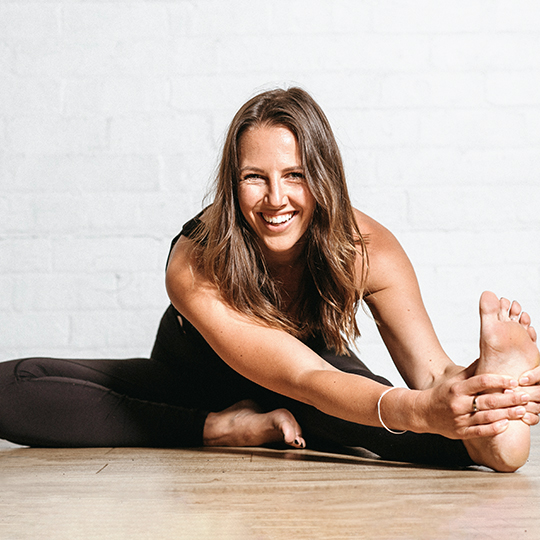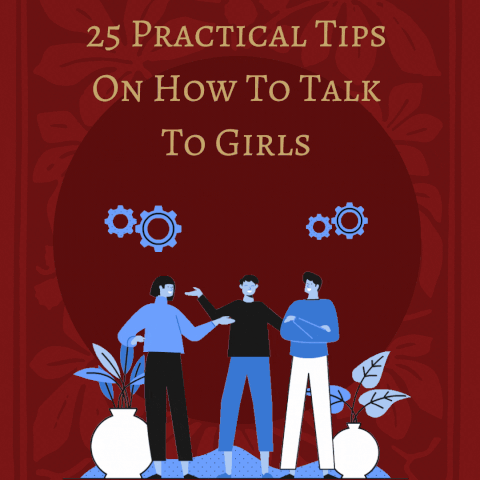Zazen is “good for nothing” — the journey to Enlightenment starts with “just sitting” — and it’s good for your health, stress or anxiety (studies)
Zazen is a type of meditation that is central to Zen Buddhism, and first taught by Shakyamuni Buddha as an insight practice — and it’s good for nothing! Just sit. That is all. Don’t get us wrong, it’s good...
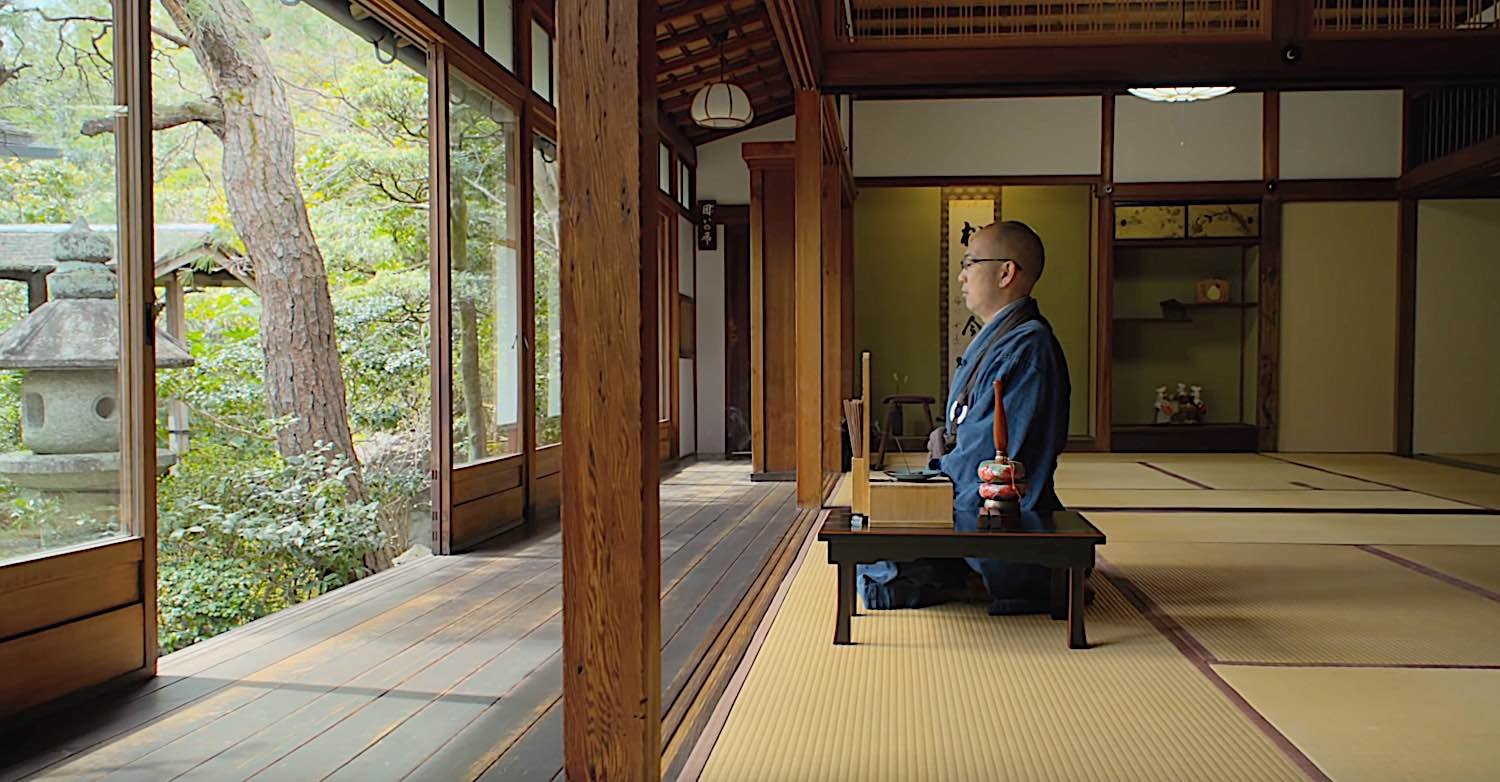
Zazen is a type of meditation that is central to Zen Buddhism, and first taught by Shakyamuni Buddha as an insight practice — and it’s good for nothing! Just sit. That is all. Don’t get us wrong, it’s good for you, for your mind, your health, your stress. But — the goal of Zazen is to have — no goal! It’s important to have “no expectations” — in the famous ‘riddle language’ of Zen.
Who are the best practitioners of Zen? Aside from the great Zen masters — probably your cat.
By Josephine Nolan
“In my heart I believe that to practice ‘good-for-nothing’ Zazen is the most authentic Buddhist tradition,”
—Shokuku Okumuru, a Soto Zen priest, and founder of Sanshin Zen Community.
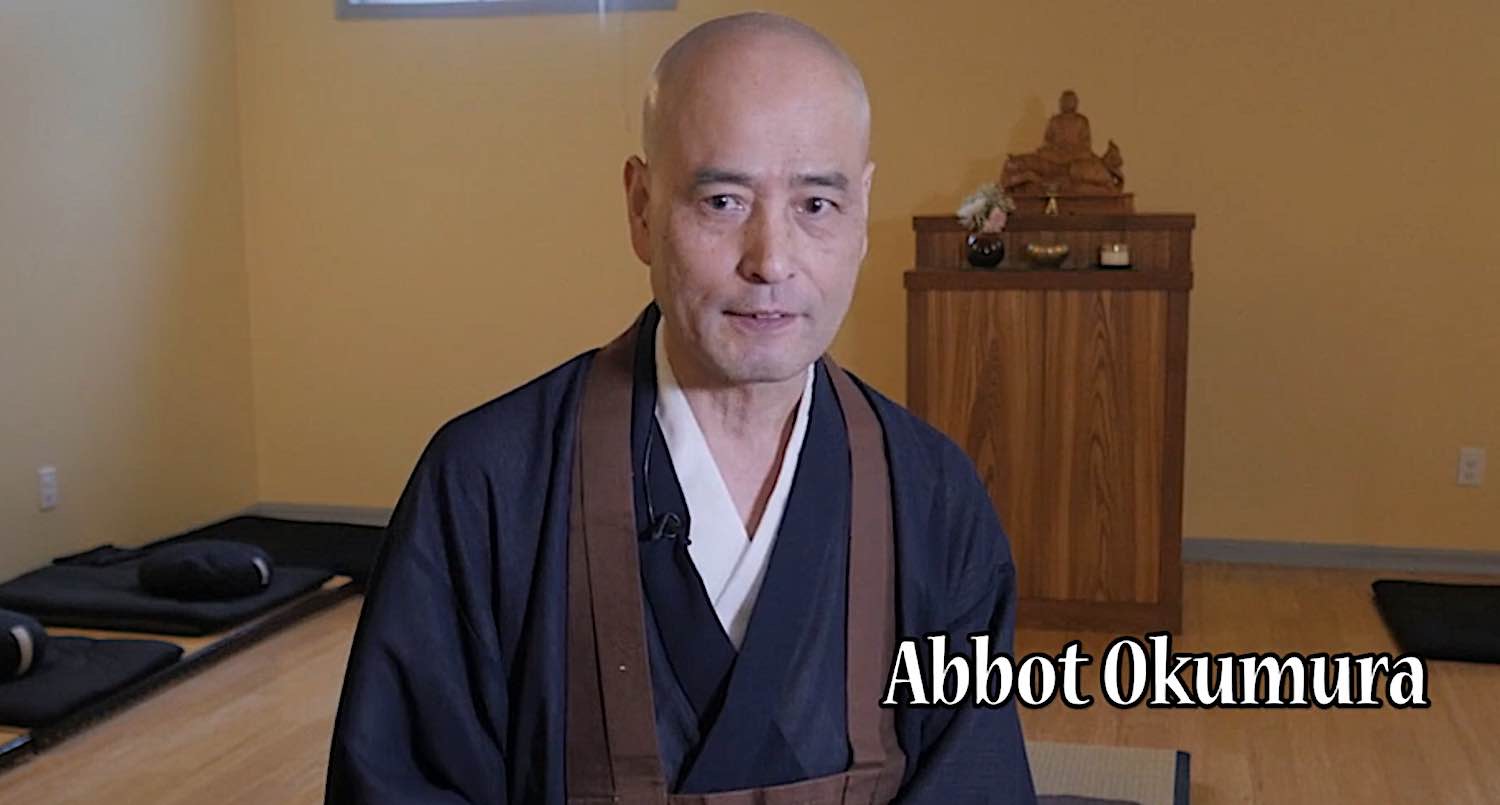
Abbott Okumura provocatively declares, “Zen is good for nothing” — but this isn’t an empty phrase (pun intended.)
All forms of Buddhism “just sit”
All joking aside, Zazen (sesshin) is one of the most important practices! All traditions of Buddhism incorporate elements of this sitting. Yet, it works best when you have no goal. When you do not consciously direct your session. “No effort” is the key to Zazen. At the same time, it is one of the most difficult disciplines in Zen or Chan — and all forms of Buddhism. It was a core practice taught by Shakyamuni Buddha more than 2500 years ago, and still relevant —
Shohaku Okumura explains, “We usually think this form of meditation is to attain some kind of Enlightenment or awakening, but Dogen said we should just sit, without any expectation. Because, if you practice to attain Enlightenment, then that is a desire. Desire, or egocentric desire is still working there. So, from the very beginning we just to use Dogen’s expression just ‘throw ourselves into the way’ without expecting any reward.” In Dogen’s teachings of Soto Zen it is called Shikantaza.
Shokuku Okumuru, a Soto Zen priest, and founder of Sanshin Zen Community, explains Zazen:
Zazen is Good for Nothing from Interior Mythos Journeys on Vimeo.
Discovering the true nature of suffering — and the nature of the very Universe — requires “emptiness.” Empty does not mean “nothing” as you’ll quickly find when you try to sit for twenty-five minutes. Your mind zooms here and there — anything but empty. It is among the most difficult of practices.
“Good for nothing” in Zazen means “empty of goal, empty of purpose, empty of expectation — just be.” Arguably, Zazen is more difficult in our modern world than it might have been a few hundred or thousand years ago. “Just be” is a very big “expectation” in Zazen.
Images of Gautama Buddha most often show him seated in meditation. He attained Enlightenment — by sitting. He sat under the Bodhi tree, searching for the answers to our suffering in a heroic meditative journey. Although sitting may be easy, Zazen is far more challenging — but, we can make the same heroic journey. By emulating not only Buddha’s seated mediative posture, but the heroic quest for Enlightenment, you, too, can attain realizations.

The greatest of teachers, Shakyamuni seated in meditation under the Bodhi tree.
It may seem counter-intuitive that “sitting” Zazen is challenging — but have no doubt that it is. How hard can “just sitting be.” If you have never undertaken the practice, you’d be surprised. Two or three minutes is a breeze… then the clock seems to slow down, you get itchy in hard-to-reach places, you fidget, your leg goes to sleep, your mind starts to wander, your eyes dry out, you have this unmistakable urge to scratch your nose — how is all of this a Buddhist practice?
Worst of all, if you’re undertaking formal Zazen in a group, when your mind starts to drift, or you get sleepy, you may get a whack on the shoulder from the meditation master! (It’s called Keisaku Slap — but never fear — it really doesn’t hurt, it just wakes you up!) — and in solo practice, there’s no risk of that!) One thing seems certain, “just sitting” is hardly relaxing, despite what the research shows about stress-reduction! Or, is it?
A student receives a Kaisaku Slap — looks painful — but not really, it’s to wake you up!
Fortunately, getting started is easy. In this feature, we’ll walk you through everything you need to know to get started with profound Zazen (Sesshin), with tips on how to do it correctly.
We’ll also provide some tips for beginners who may be struggling with the practice. So if you’re interested in learning more about Zazen, keep reading!
Introduction to Zazen in your home — although, granted, your garden likely isn’t quite as lovely as this garden in the video — from Taizo-in Zen Buddhist Temple :
Where Does Zazen Come From?
It helps to have some context before diving into a new practice. Zazen literally means “seated meditation” in Japanese, a central part of the Zen Buddhist tradition. Buddhism originated in India over 2,500 years ago and eventually spread to other parts of Asia. Zen Buddhism is a particular school that developed in China and Japan.
Zen Buddhists believe that meditation is a way to see things as they are and to let go of the false beliefs that cause suffering. Zazen is one tool that can help us achieve this goal.[1]
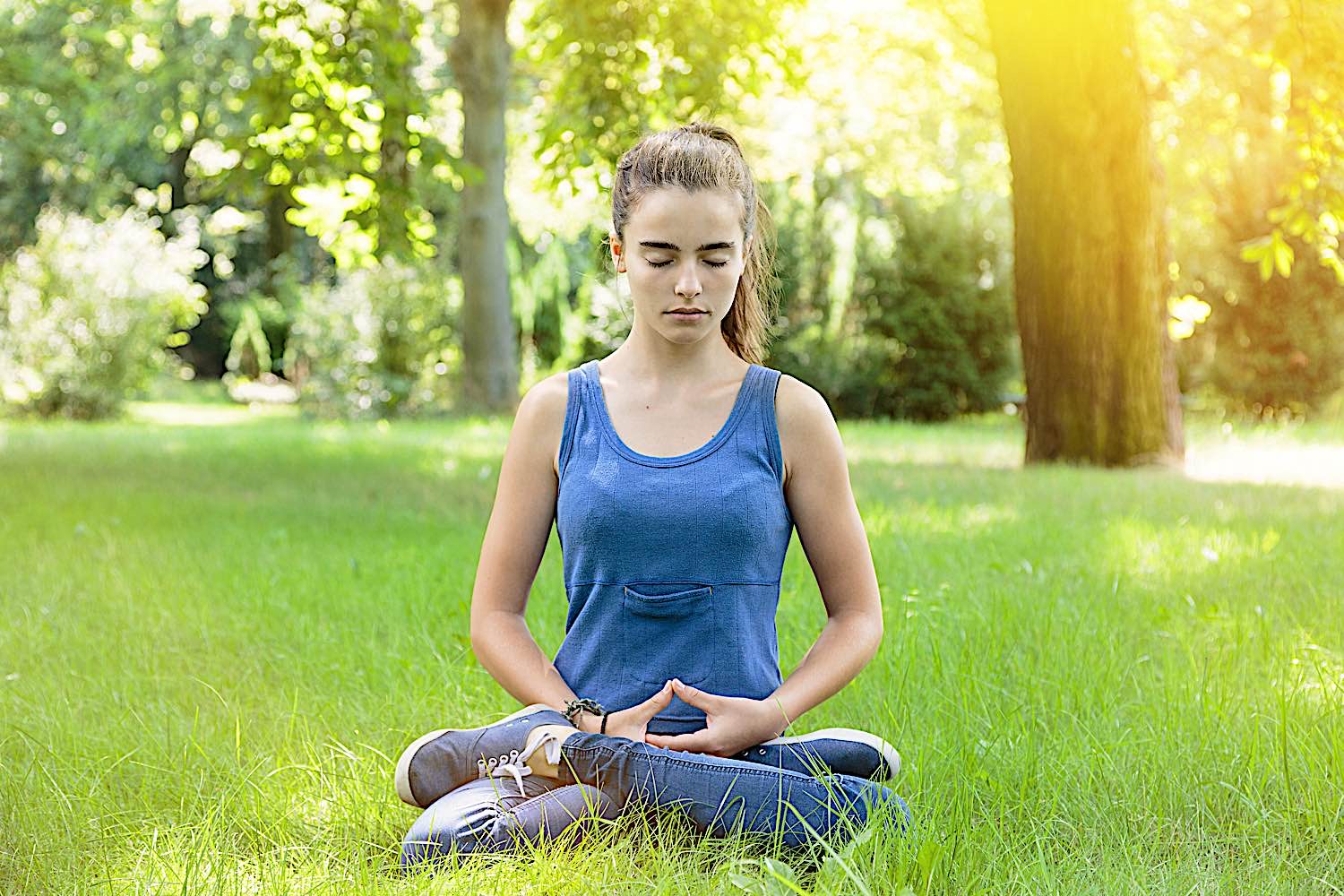
Zazen in the park. A young lady does full lotus Zazen in a park. Zazen meditation’s health and life benefits are well established in many studies.
The benefits of Zazen
Meditation has been shown to offer various benefits for both the mind and body. Studies have shown that regular meditation can help to reduce stress, anxiety, and depression. It can also improve focus, concentration, and memory. [We covered 17 cited research studies on this in this previous feature>>]
For some people, meditation can even lead to increased feelings of well-being and happiness. In the Buddhist tradition, Zazen is also believed to help us see the world more clearly and to live more fully in the present moment.[2]
Many great Buddhists, including Nichiren, Dogen, and Hakuin, all practiced Zazen regularly and attributed reaching Nirvana to the practice.

Various acceptable postures for Zazen.
The different seated postures for Zazen
Zazen is traditionally done while seated on a cushion called a zafu. The zafu is placed on top of a larger cushion called a zabuton, which helps to keep your legs and feet comfortable. It will slightly raise your hips above your knees, which helps to keep your spine straight. Your breathing is affected by the position of your spine, so it’s essential to sit up tall.
Several different seated postures can be used for Zazen. The most important thing is to keep your back straight, and your chin tucked in slightly. This will help you to breathe deeply and remain alert.
Here are some of the most common seated positions — and don’t worry if you can’t sit a lotus posture (many of us can’t!) — as there are many choices, all perfectly valid for Zazen.
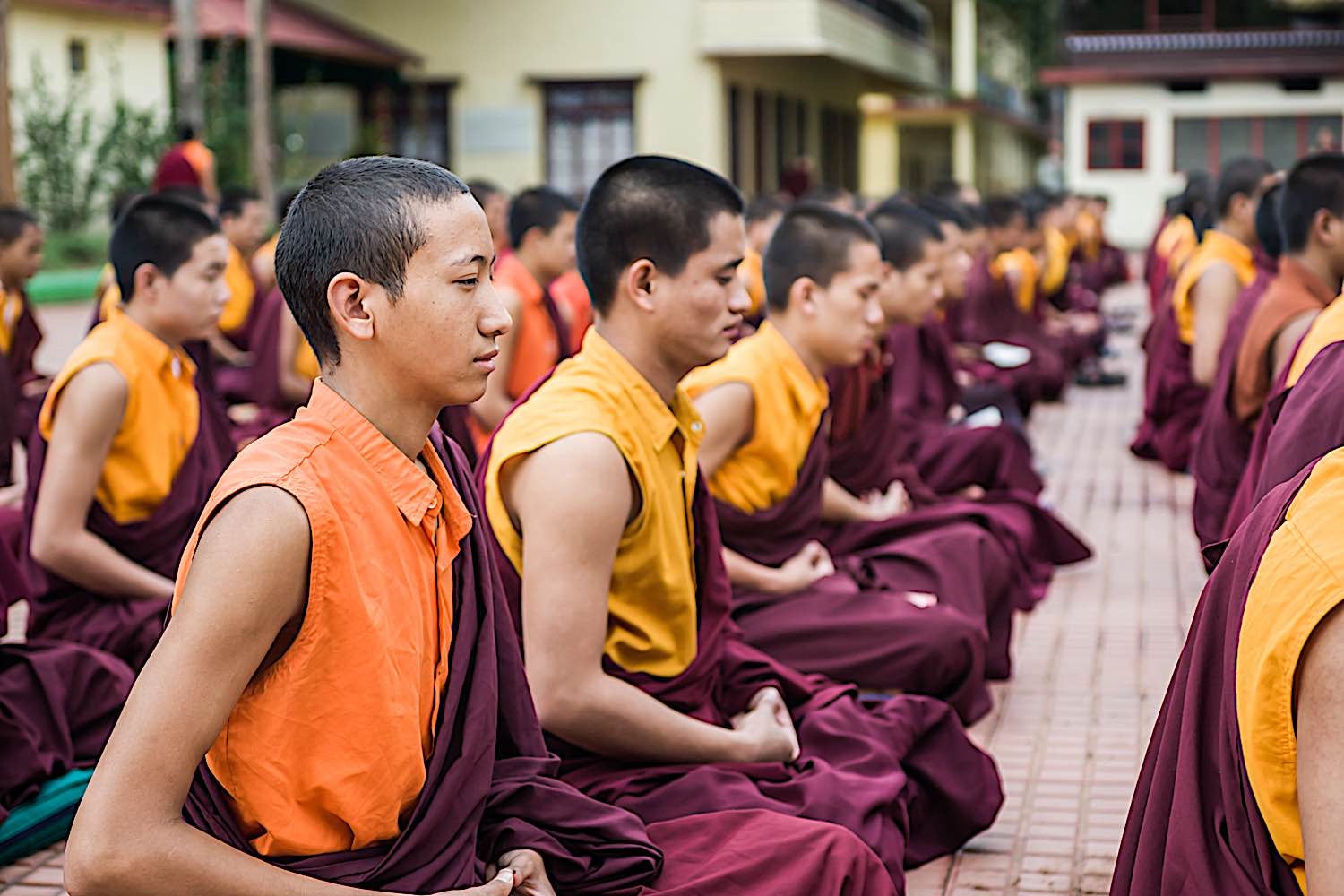
All traditions of Buddhism sit for meditation and usually in the lotus — or similar — posture. Here are yougn Buddhist monks in Kushalnagar India doing Zazen.
Full-Lotus Posture
The Full-Lotus is known as the most stable of all the Zazen positions. For this position, your legs are crossed, with each foot resting on the opposite thigh. This can be difficult to achieve at first, but it’s worth practicing if you can.
Once you’re in position, place your hands in your lap with your right hand resting on top of your left and your palms facing up. You can also place your hands, one on top of the other in front of your belly button.
Take a few deep breaths and relax into the posture.
Half-Lotus Posture
The Half-Lotus is a variation of the Full-Lotus that is slightly easier to achieve. For this position, you will cross one leg over the other and rest it on the opposite thigh. Once you’re in position, you can place your hands in the same way as the Full-Lotus position.
This posture is easier because you don’t have to lift your second foot as high. It’s a good option if you’re just starting out or if you have trouble getting into the Full-Lotus.
Burmese Posture
Next, we have the Burmese posture. To assume this position, sit with your legs folded in front of you and your feet flat on the ground. Once again, place your hands in your lap with your right hand resting on top of your left.
It is similar to the Full-Lotus, but your feet are placed differently. This is a good option if you have trouble sitting in the Lotus position or if your knees are painful when raised off the ground.
Seiza Posture
The Seiza posture is the traditional Japanese way of sitting. To assume this position, kneel on the ground with your legs tucked underneath you and your feet pointing behind you. Then, rest your hands on your thighs with your palms facing up.
This posture can be tough on your knees, so it’s a good idea to sit on a cushion or folded blanket if possible. It’s also important to keep your back straight, and your chin tucked in, just as with the other positions.
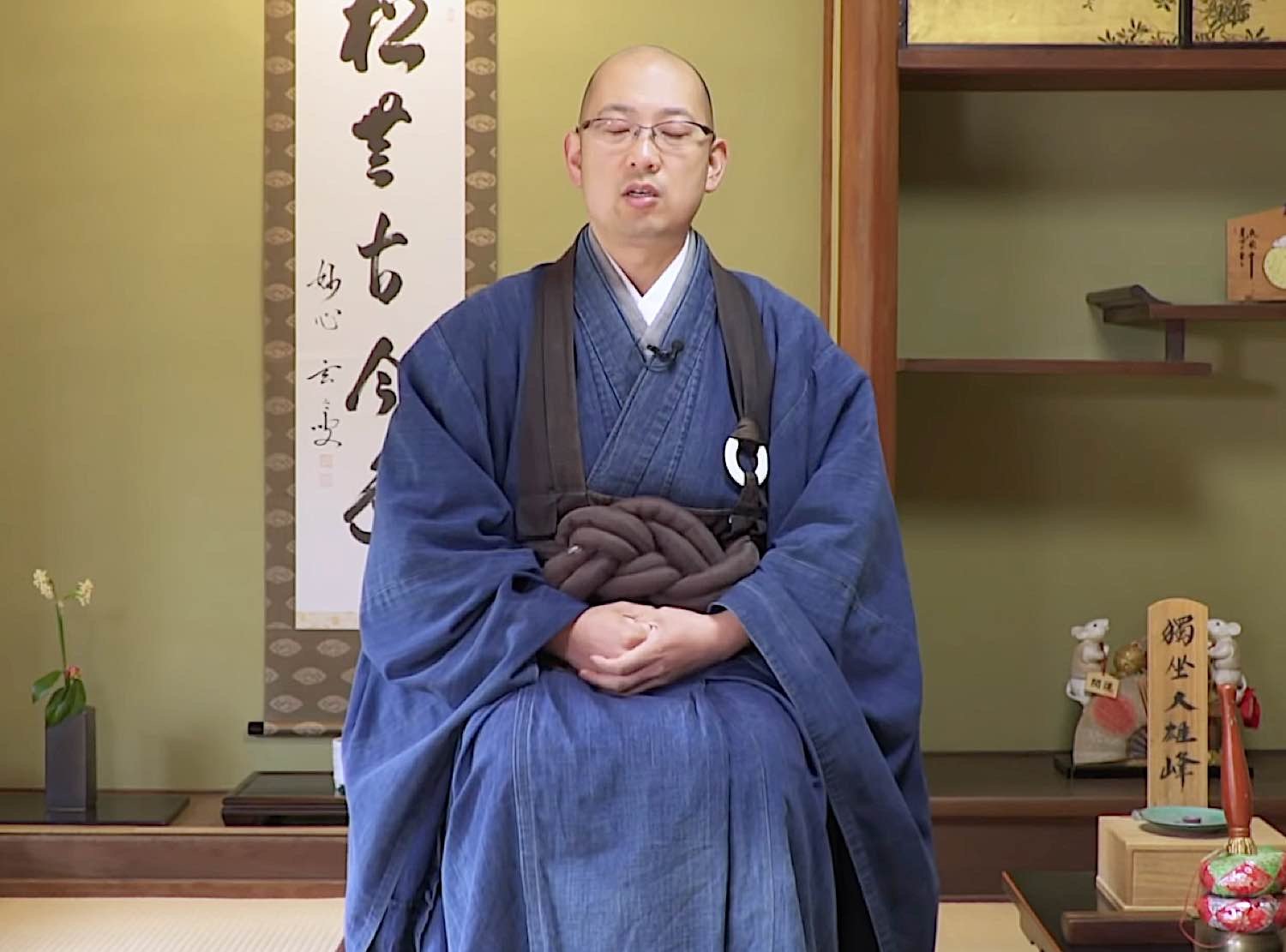
Zazen can also be done seated, as demonstrated by Deputy head priest Taizo-in.
Chair Posture
Lastly, you can also sit in a chair with your feet flat on the ground and your hands resting in your lap. This is a good option if you have trouble sitting on the floor or need to get up quickly.
What to do if you can’t sit
There are plenty of reasons why you might not be able to sit in traditional Zazen positions. Maybe you have an injury or a chronic condition that makes it difficult to sit on the ground. Perhaps you’re pregnant or have young children, so you can’t be away from them for too long.
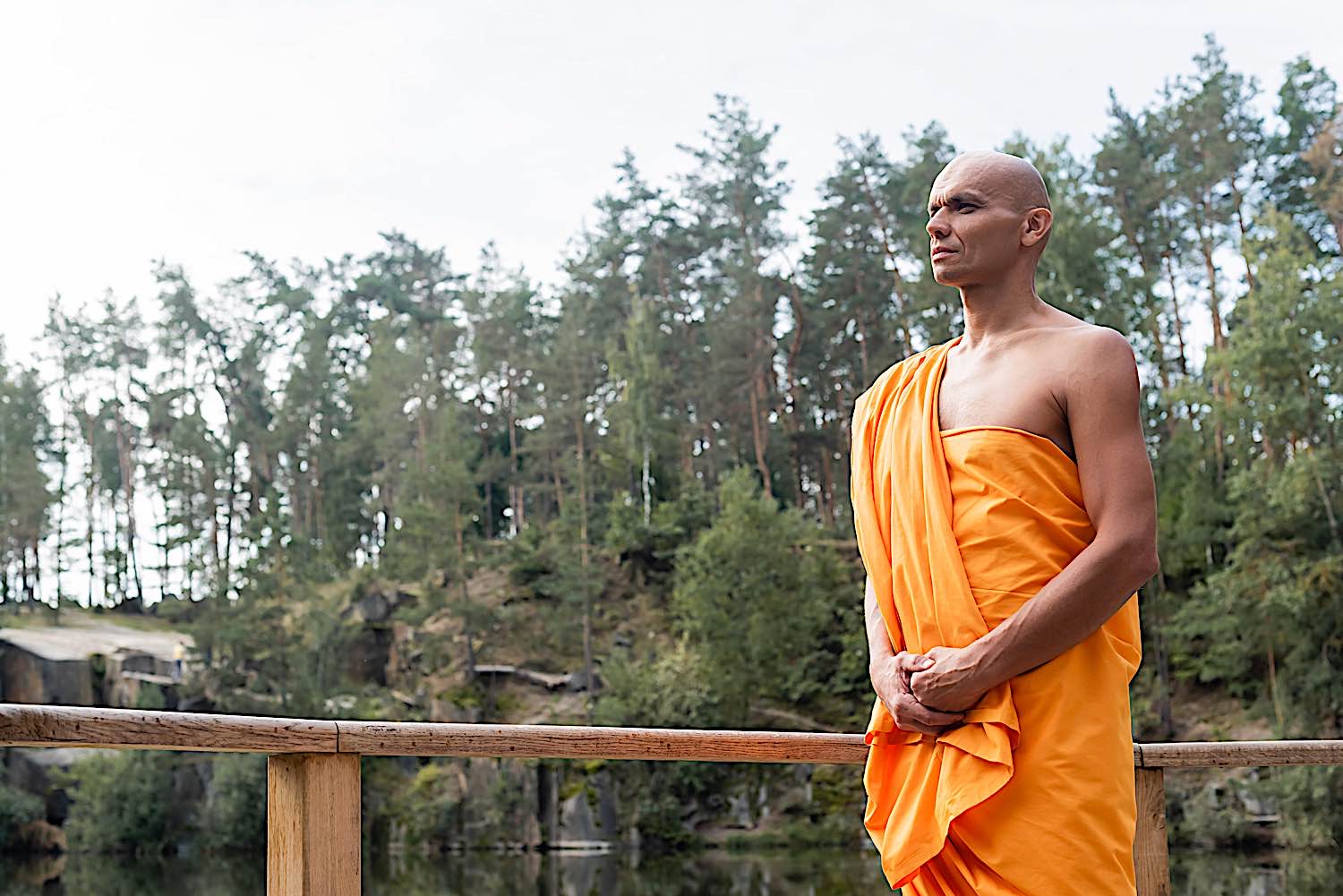
Standing is another form of meditation.
Whatever the reason, there’s no need to worry. You can still practice Zazen and reap all the benefits; you just might need to sit in a different position. If you can’t sit on the cushion on the floor, you can sit in a chair with your feet flat on the floor and your hands resting in your lap. (See chair posture above.)
You can also use a meditation stool or bench if you prefer, where you are partially kneeling or partially sitting.
Standing Posture
If you have trouble sitting, but can stand, try the standing poses. In Zazen, and certainly in Zen, both walking and standing are acceptable poses for mindfulness. (Although mindfulness isn’t strictly Zazen, you do what you can!) To some extent, you can do Zazen while standing if you have a relaxed posture, usually feet slightly apart with very slightly bent knees.

A Buddhist monk performing formal walking meditation on a forest path.
Shavasana and Prone Posture
You can lie down in the so-called “corpse pose” or lie in a reclining position — don’t be frightened by the name, but do be aware of sleepiness. To counteract the relaxed prone posture, you may have to open your eyes further. Light is a remedy for “sleepy mind.”
Prone posture is sometimes helpful for people with breathing issues. In this posture you lie facing down.
The important thing is to find a position that you can maintain for a prolonged time without pain or discomfort.
To do the corpse pose, or Shavasana — a yoga poses where you lie on your back with your legs and arms extended — you can place a pillow under your head if you like, but remember to avoid total comfort. Sleeping is relaxing, but it’s certainly not Zazen!
All about Zen in Japan —
How to Breathe Correctly During Zazen
Now that we’ve gone over the different seated positions let’s talk about how to breathe correctly during Zazen.
Zazen is traditionally done with what’s known as “natural” or “abdominal” breathing. You should breathe deeply and slowly, allowing your abdomen to expand as you inhale. [3] The breath should be smooth and even without pauses in inhalations and exhalations. You can count your breaths if it helps you to keep a steady rhythm.
Another thing to keep in mind is that you should be aware of your breath without trying to control it. Just let it happen naturally and don’t force anything. The mind has a tendency to wander, especially when we’re trying to focus on something as seemingly simple as our breath. But with a bit of practice, it’s possible to bring our attention back to the present and focus on our breath.
Here are some tips for how to do this.

Find a peaceful place. It need not be remote, but it should be a place conducive to a relaxed undistracted mind — at least in the beginning when you are not an expert. (Experts can meditate anywhere.)
Find a comfortable, peaceful place
Although experts at Zazen can do it anywhere — and clearly ordinary mindfulness can be undertaken anywhere, even a busy subway train — for beginners to Zazen it’s best to have a peaceful refuge, even if it’s your little bedroom. Let people know you’re meditating or resting — do not distrub please! Turn off the phone or mute!
This is important for less advanced practitioners because you are attempting to still the busy mind; you don’t want to be interrupted while meditating. Humans have an innate bias toward novelty, which means that our attention is quickly drawn to new things.
For example, a sound in an otherwise quiet room will likely catch our attention and pull us out of our meditative state. So, it’s crucial to find a place where you won’t be disturbed by things like this.
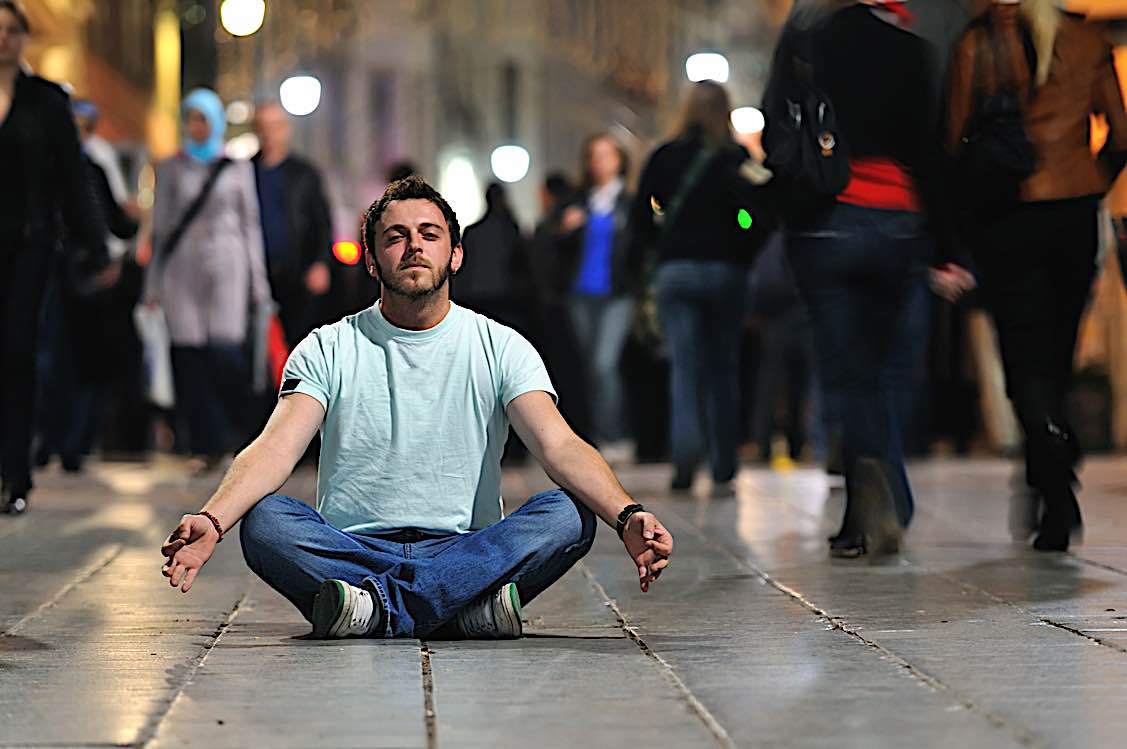
Some people can meditate anywhere, retreating into mind for space and silence. Most of us need a private room or space.
Set a timer
A timer is helpful because it allows you to relax and not worry about how long you’ve been meditating. If you’re constantly wondering how much time is left, it will be harder to focus on your breath.
If you’re new to meditation, start with a short-timer (5-10 minutes) and gradually increase the length of time as you get more comfortable with the practice.
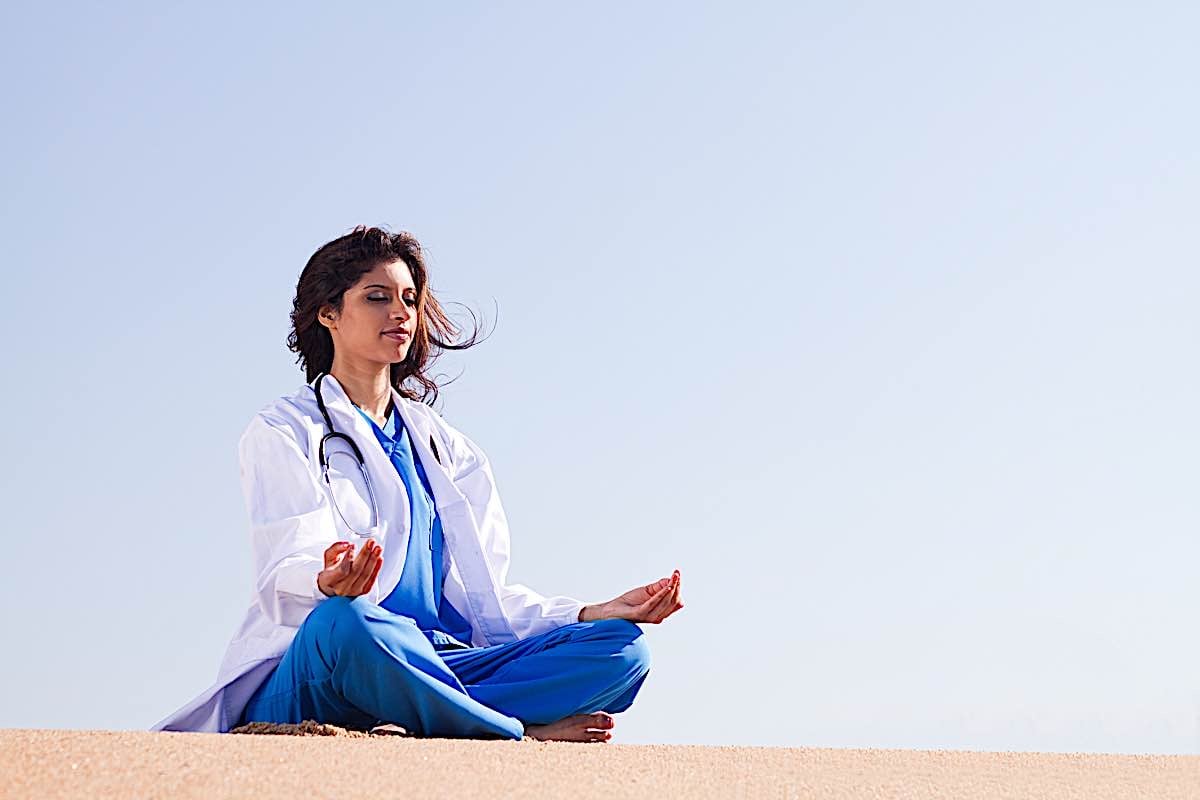
For stress, the best medicine is a little quiet meditation.
Half – close your eyes
Since meditation is all about embracing mindfulness — and to a less extent “seeing” emptiness — it’s recommended to half-close your eyes. Dont’ think of this as cutting off or separating from the “waking world” but rather an signal to your mind to be mindful. This will help you to focus on your internal experience and prevent distractions. If half-closed is still distracting, beginners can fully close their eyes.
People react differently to half-closing their eyes. You might see pure darkness, colorful patterns, or images of things you’re thinking about. Whatever you see, just let it be and don’t focus on it too much. The important thing is to focus on your breath and not get caught up in the visuals.

Zasep Tulku Rinpoche meditates mindfully by the a river in British Columbia, Canada.
Just breathe
Inhale through your nose and exhale through your mouth.
Try to practice abdominal breathing. Inhale slowly and deeply through your nose, then exhale slowly and evenly through your mouth. As you inhale, allow your abdomen to expand, and as you exhale, let it contract.
Inhaling through your nose helps to slow down your breathing and makes it easier to focus on the breath. Exhalation is also important because it lets you go of any tension you might be holding in your body.
It’s common for people to hold their breath when they’re anxious or stressed, so exhaling fully can help to release that tension.
How To Deal With Thoughts During Zazen
If you’re like most people, your thoughts will naturally wander during Zazen. It is perfectly normal and nothing to worry about, as it happens to everyone. It can be helpful to think of your thoughts as clouds passing through the sky.
They’re there for a moment, and then they’re gone. Don’t try to hold on to the thoughts nor push them away. Just let them pass and focus on your breath. It won’t be easy at first, so here are a few techniques that you can use to help you focus.

Most mediators have to cope with the active monkey mind that won’t settle.
Monkey Mind? Focus on an object instead
Strictly speaking, in Zazen, we face a blank wall to avoid distractions. The focus is normally just breath. But — again for we beginners — a common beginner practice is to focus on an object, where breath or mindfulness doesn’t work for your busy “monkey mind”. This normally should be a sacred Enlightened object, such as a statue of Buddha.
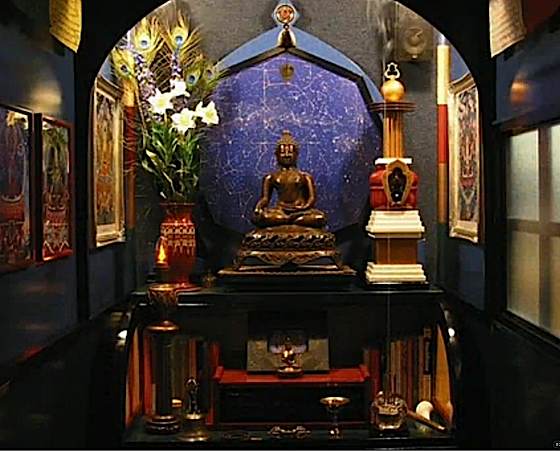
Having a statue set up on a table in front of your meditation seat can be helpful as an Enlightened object of focus.
If you find it difficult to focus on your breath, you can try focusing on an object instead. It’s best to choose something small and not too distracting, i.e., without too many colors or details. This could be anything from a candle flame to a pebble.

Focus on your body: Another option is to focus on your body. You can feel the sensation of your breath as it enters and leaves your nostrils or the rising and falling of your abdomen. You can also try to feel the sensation of your feet touching the ground.
It’s important to be patient with yourself and not get discouraged if your mind wanders frequently. Meditation is a practice, and it takes time and effort to improve.
Still, have trouble with Zazen?
For those of us with major monkey minds — an unofficial Buddhist term for “busy mind” — as a last resort try focusing on a mantra. It’s not strictly Zazen, but — hey, I won’t tell if you don’t.
A mantra is a word or phrase that you repeat to yourself during meditation. It can be anything that you find meaningful. The important thing is that it’s short and easy to remember.
An example of a mantra is “Om Mani Padme Hum,” a Buddhist chant that means “praise to the jewel in the lotus ” — the mantra of the Bodhisattva of Compassion Avalokiteshvara.
You can speak gently, or chant along (for example with this video) if you find your mind too unsettled:
Ending Your Zazen Practice
When your timer goes off, slowly open your eyes and take a few deep breaths. Allow your body to adjust to the outside world before you get up and move around. Take your time getting up, so you don’t feel dizzy or lightheaded. You can also try doing some gentle stretching exercises to release any tension remaining in your body.
That’s it! You’ve just completed a session of Zazen. Aim to do these exercises every day, and you’ll start to notice a difference in your mind and body. You’ll find it easier to focus on your breath and let go of thoughts with regular practice. And remember, there’s no right or wrong way to meditate. Do what feels comfortable for you, and don’t be too hard on yourself.
Meditation is a journey, not a destination.

Meditation is a journey.
Zazen is — good for you, too
Zazen is an ancient, simple, but powerful practice that can help to improve your spiritual, mental and physical health. It’s a holistic form of healing that is easy to learn and can be done anywhere, anytime. So why not give it a try? You might be surprised at the impact it has on your life.
If you found this guide helpful, please share it with others who might benefit from it. We also have several other articles and resources on Buddhism and meditation, so be sure to check those out.
Namaste.
SOURCES
[1] Art of Asia>>
[2] Healthline>>

 Astrong
Astrong 








